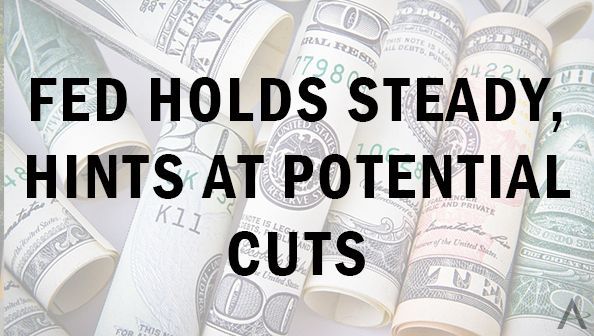Fed Holds Steady, Hints at Potential Cuts: Key Takeaways from the July Meeting

The Federal Reserve concluded its two-day policy meeting today, Wednesday, July 31st, with a decision that largely aligned with market expectations. While the central bank opted to maintain its benchmark interest rate in the target range of 5.25% to 5.50%, the accompanying statement and subsequent press conference by Fed Chair Jerome Powell offered crucial insights into the committee's evolving stance on monetary policy.
Key Takeaways from the Fed Meeting
- Interest Rates Unchanged: The Federal Open Market Committee (FOMC) decided to keep the federal funds rate steady for the eighth consecutive meeting. This decision reflects the Fed's cautious approach to navigating the delicate balance between taming inflation and supporting economic growth.
- Progress on Inflation: The Fed acknowledged that "some further progress" has been made in reducing inflation, a positive development that has been underpinned by easing price pressures in several key areas. However, the central bank emphasized its commitment to achieving a sustainable return of inflation to its 2% target.
- Economic Resilience: The FOMC assessment highlighted the continued expansion of economic activity, supported by a robust labor market characterized by strong job gains and low unemployment. This resilience underscores the complexity of the Fed's challenge as it seeks to cool inflationary pressures without inducing a recession.
- Balanced Risks: The Fed's statement indicated that the risks to achieving its dual mandate of maximum employment and price stability have moved into "better balance." This suggests that while inflation concerns remain, the committee is increasingly mindful of the potential downside risks to the economy.
- Open Door to Cuts: While no rate cuts were implemented, the Fed's language signaled a potential shift in its policy trajectory. The statement noted that "it will not be appropriate to reduce the federal funds target range until inflation moves sustainably toward 2%." This implies that rate cuts could be on the table if inflation continues to moderate significantly.
- Powell's Tone: Fed Chair Jerome Powell's press conference provided additional context for the committee's decision. His remarks suggested a growing openness to the possibility of rate cuts later this year, but he also emphasized the data-dependent nature of policymaking. Powell stressed the importance of continued progress on inflation and the need to avoid prematurely loosening monetary conditions.
Implications for the Economy and Markets
The Fed's decision to maintain interest rates while signaling a potential shift in policy has generated a mixed reaction in financial markets. On one hand, the acknowledgment of progress on inflation and the balanced risk assessment have provided some relief to investors concerned about an overly aggressive tightening cycle. On the other hand, the absence of an immediate rate cut has dampened expectations for a rapid economic rebound.
Going forward, the path of interest rates will largely depend on the evolving inflation picture. If price pressures continue to decline steadily and without triggering a significant economic slowdown, the Fed may be inclined to cut rates later this year. However, if inflation proves to be more persistent, the central bank could be forced to maintain a restrictive stance for an extended period.
The Fed's July meeting marked a significant moment in the central bank's policy journey. While the decision to hold rates steady reflects a cautious approach, the accompanying statements and Powell's comments suggest a growing willingness to consider easing monetary policy if conditions warrant. Investors and businesses will need to closely monitor economic data and Fed communications for clues about the likely timing and magnitude of any potential rate cuts.
Thank you for the opportunity to serve you and your family and to collaborate with you for—Wealth Management for Life!




